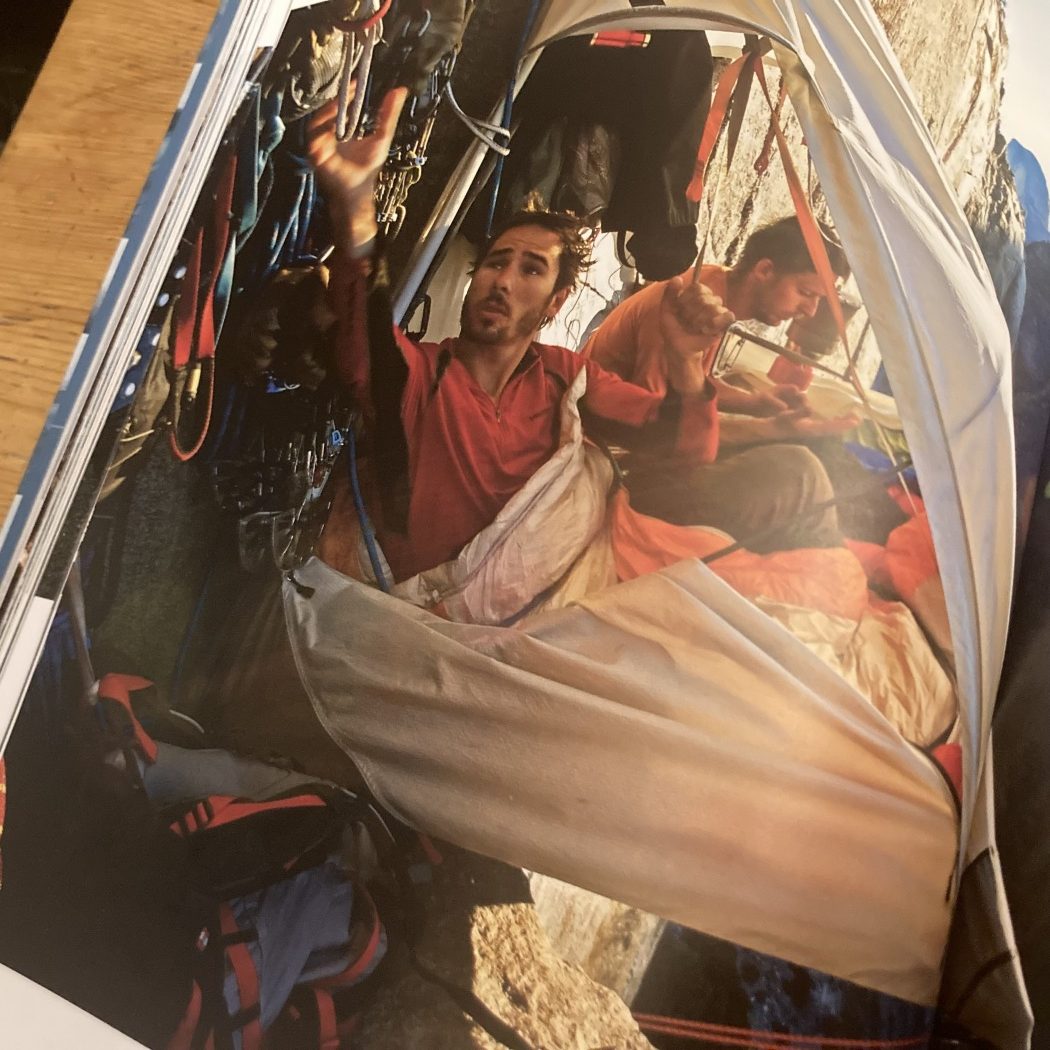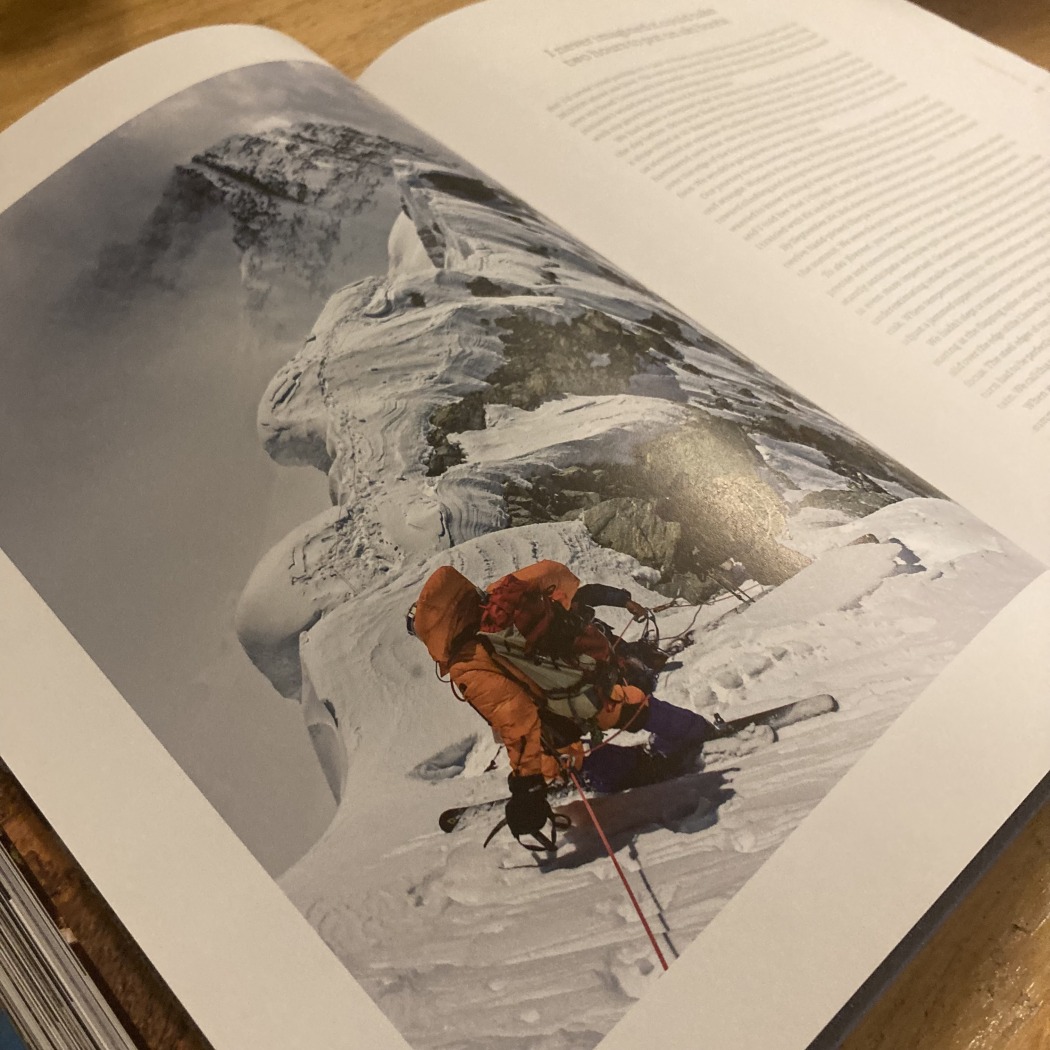There And Back: Photographs from the Edge, is Jimmy Chin’s latest creative release. As much as any modern explorer I can think of, Chin is part of popular culture. But before the Academy Award, before The Rescue (a stellar documentary), before his couscous for dinner and breakfast portaledge moment in Meru, before the mononymous person we refer to as “Jimmy,” he was dirtbagging and climbing and skiing. It’s our good fortune too that Chin, long ago, borrowed a camera and began his photographic journey.
I should, at first, acknowledge a bias. Photographic images of open country, or humans wending in the vertical (which includes skiing), or moving across vast expanses, have always captured my imagination. Like many, I was enamored with Ansel Adams and would road trip to see his large-format exhibits. Now, decades later, my two most coveted possessions are a signed Bradford Washburn photograph and a framed mid-1930s series of panoramic landscape images. The panoramas feature the North Fork of the Flathead River bordering Glacier National Park – a place I served as a fire lookout for a few seasons.
Perhaps I’m a throwback, but photography resonates more for me than motion pictures or video. The simple idea of Chin’s book was an easy sell.
The book is organized chronologically and frames Chin’s career by locality. There And Back begins in Charakusa, Pakistan, in 1999 and concludes in Antarctica in 2017. Sandwiched in between are images that some may recognize from the popular adventure magazines and The New York Times, while it is also generously interspersed with select adventure personalities.
Chin presents descriptive one-page essays to set the tone for each significant section of the book. The writing is crisp and descriptive – and additive to the whole. But that’s not what I came for; the images are the real deal and incentivize the page-turning.
In trying to decipher what Chin has become globally – he’s a brand, and he and his wife, Elizabeth Chai Vasarhelyi, are creative forces – we have to remember that his perseverance and willingness to insert himself into some insane positions allowed Chin to capture the moment. With his can-do technical expertise and physical prowess, Chin became a sought after expedition partner and creative. Further, the photographs reveal what we know to be true; that Chin was an equal participant on these expeditions, not simply a hired gun with a full quiver of lenses and camera bodies. He can and does suffer to get the shot. That’s also the gift for us; with his steely nerves and keen eye, we gain access to some remarkable adventurers, people, and cultures.
As Chin’s creative energy gravitates towards big-time screenings, it’s hard to imagine this collection won’t be his photographic magnum opus. Although, I suppose, it’s hard to tell with someone like Chin, who we perceive as indefatigable.
The cost of admission is not cheap at $50, but There And Back can be had for a few dollars cheaper.
Think of this as more than a coffee table book destined for staling. Most of the images are timeless. And their actual worth may be their inspiration – just turning a few pages is a not-so-subtle reminder to get out the door and seize the day.
Jason Albert comes to WildSnow from Bend, Oregon. After growing up on the East Coast, he migrated from Montana to Colorado and settled in Oregon. Simple pleasures are quiet and long days touring. His gray hair might stem from his first Grand Traverse in 2000 when rented leather boots and 210cm skis were not the speed weapons he had hoped for. Jason survived the transition from free-heel kool-aid drinker to faster and lighter (think AT), and safer, are better.




